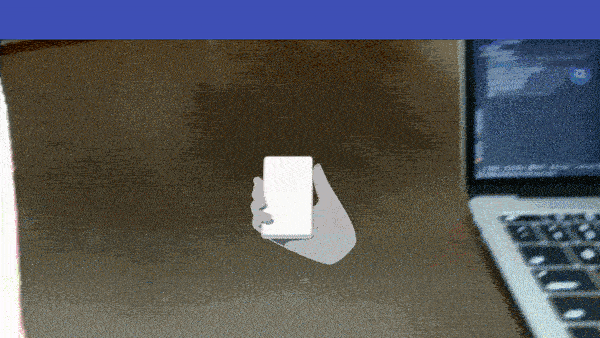I am trying to show an object without tapping on the screen using ARCore. In the basic sample of ARCore Sceneform provided by Google, you need to tap on the screen after it detects the surface.
I want to implement that, AR shows the object without tapping on the screen.
Anchor newAnchor;
for (Plane plane : mSession.getAllTrackables(Plane.class)) {
if (plane.getType() == Plane.Type.HORIZONTAL_UPWARD_FACING
&& plane.getTrackingState() == TrackingState.TRACKING)
{
newAnchor = plane.createAnchor(plane.getCenterPose());
break;
}
}
I tried this for displaying without tapping on the screen.
if Anyone know how to do this please help me. Thanks in Advance
Advertisement
Answer
Although I suggest you place the object when a user taps & where s/he taps on the screen, what you’re asking can be achieved like so. (this example is in Kotlin)
Before you begin placing an object, you need to create a ModelRenderable. Declare one @Nullable globally.
private var modelRenderable: ModelRenderable? = null
//Create the football renderable
ModelRenderable.builder()
//get the context of the ARFragment and pass the name of your .sfb file
.setSource(fragment.context, Uri.parse("FootBall.sfb"))
.build()
//I accepted the CompletableFuture using Async since I created my model on creation of the activity. You could simply use .thenAccept too.
//Use the returned modelRenderable and save it to a global variable of the same name
.thenAcceptAsync { modelRenderable -> this@MainActivity.modelRenderable = modelRenderable }
The major chunk of the programming has to be done on the frame’s onUpdate method. So you attach a listener for frame updates like so
fragment.arSceneView.scene.addOnUpdateListener(this@MainActivity) //You can do this anywhere. I do it on activity creation post inflating the fragment
now you handle adding an object on the listener.
override fun onUpdate(frameTime: FrameTime?) {
//get the frame from the scene for shorthand
val frame = fragment.arSceneView.arFrame
if (frame != null) {
//get the trackables to ensure planes are detected
val var3 = frame.getUpdatedTrackables(Plane::class.java).iterator()
while(var3.hasNext()) {
val plane = var3.next() as Plane
//If a plane has been detected & is being tracked by ARCore
if (plane.trackingState == TrackingState.TRACKING) {
//Hide the plane discovery helper animation
fragment.planeDiscoveryController.hide()
//Get all added anchors to the frame
val iterableAnchor = frame.updatedAnchors.iterator()
//place the first object only if no previous anchors were added
if(!iterableAnchor.hasNext()) {
//Perform a hit test at the center of the screen to place an object without tapping
val hitTest = frame.hitTest(frame.screenCenter().x, frame.screenCenter().y)
//iterate through all hits
val hitTestIterator = hitTest.iterator()
while(hitTestIterator.hasNext()) {
val hitResult = hitTestIterator.next()
//Create an anchor at the plane hit
val modelAnchor = plane.createAnchor(hitResult.hitPose)
//Attach a node to this anchor with the scene as the parent
val anchorNode = AnchorNode(modelAnchor)
anchorNode.setParent(fragment.arSceneView.scene)
//create a new TranformableNode that will carry our object
val transformableNode = TransformableNode(fragment.transformationSystem)
transformableNode.setParent(anchorNode)
transformableNode.renderable = this@MainActivity.modelRenderable
//Alter the real world position to ensure object renders on the table top. Not somewhere inside.
transformableNode.worldPosition = Vector3(modelAnchor.pose.tx(),
modelAnchor.pose.compose(Pose.makeTranslation(0f, 0.05f, 0f)).ty(),
modelAnchor.pose.tz())
}
}
}
}
}
}
I used one extension method
//A method to find the screen center. This is used while placing objects in the scene
private fun Frame.screenCenter(): Vector3 {
val vw = findViewById<View>(android.R.id.content)
return Vector3(vw.width / 2f, vw.height / 2f, 0f)
}


